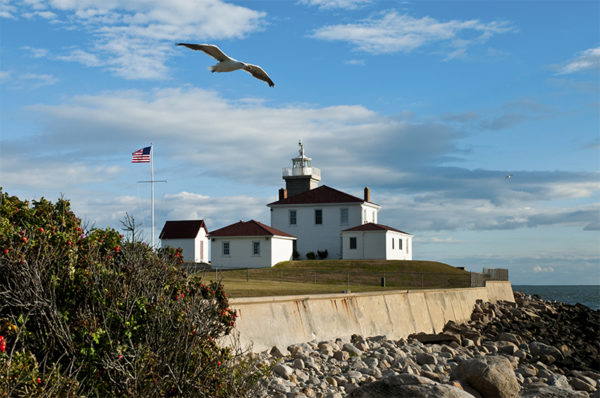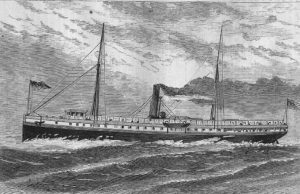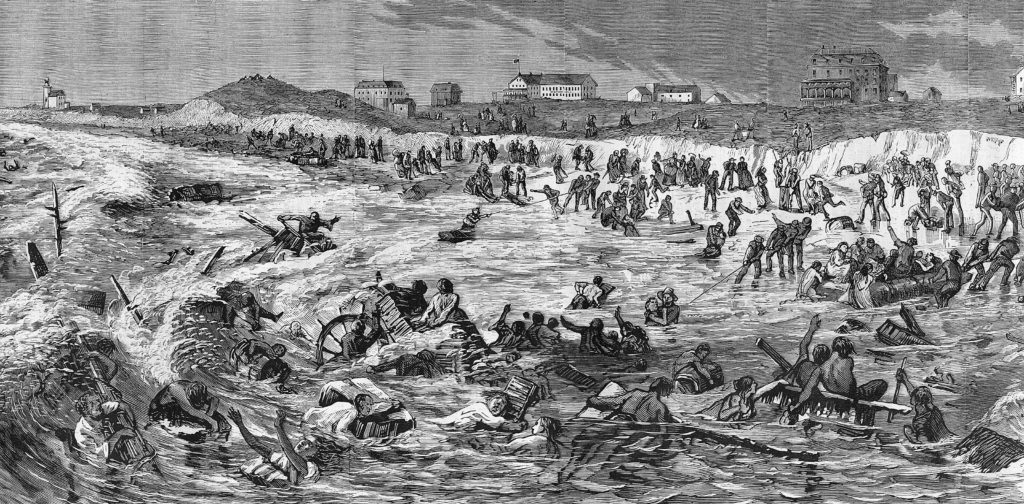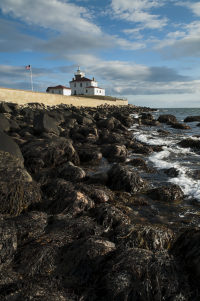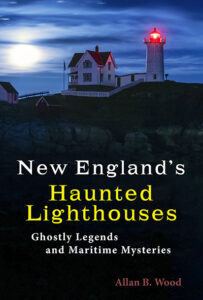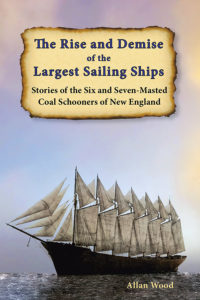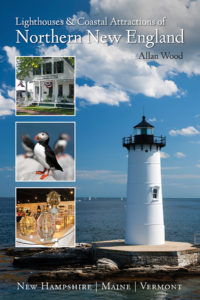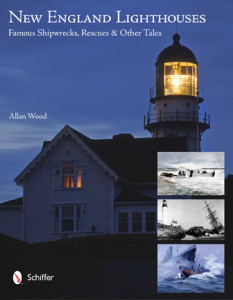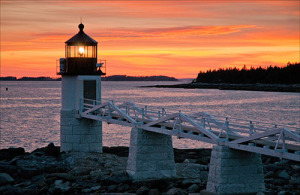The First Coordinated Rescue Effort Between Lifesaving Services in Rescuing Survivors of the Metis Near Watch Hill Lighthouse
Until the early 1900s, lifesaving services were divided into three branches: the Life Saving Service, the Lighthouse Service, and the Revenue Cutter Service. Where the lighthouse keepers and their assistants were only allowed to attempt rescues near the proximity of the lighthouse, life saving stations, and their “surfmen” as they were called, under the Life Saving Service, covering a more vast area and could assist a more significant number of distressed survivors on a wreck a distance from the shore, they were more mobile. They were specifically trained in their ability to rescue survivors. Both the Lighthouse and Lifesaving branches were responsible under the US Lighthouse Service. The Revenue Cutter Service was initially involved in rescue efforts only on those wrecks out in open waters, as patrol vessels for shipping and trade, and in searching for pirates. This event of the collision between the steamer Metis and the Schooner the Nettie Cushing involved the first coordination of all three of these branches of rescue service.
As with most lighthouses, although Watch Hill Lighthouse guided many vessels and their crews in fair and inclement weather, shipwrecks still occurred in the area. Unfortunately, two of the worst maritime disasters occurred near Watch Hill Lighthouse: the collision of the Larchmont and the Harry P. Knowlton and the collision between the Nettie Cushing and the Metis described below. However, these incidents brought about special safety procedures and regulations used today.
Collision Between the Schooner Nettie Cushing and the Steamer Metis
In 1872, during the disaster, there was not a regular life-saving crew at Watch Hill but a group of dedicated volunteers. Captain Daniel Larkin served as keeper at the lighthouse at Watch Hill from 1861 to 1868 until he developed a profitable tourist business hotel called the Larkin House. He then volunteered to head up the volunteer lifesaving crew nearby. Captain Jared Crandall took over Larkin’s position as Keeper of Watch Hill Light. He owned an old whaleboat, the only lifesaving boat for rescue efforts.
On the afternoon of August 29, 1872, the 200-foot wooden steamer Metis was heading north from New York to Providence, Rhode Island, with a load of cotton cargo bound for the New England textile mills. She was carrying 104 passengers and 45 crew members as a summer gale storm approached the region. During the storm, a small schooner, the Nettie Cushing, was carrying a load of lime and heading for New York. Around 8:00 P.M., the winds had reached gale force and continued through the night. Around 4 o’clock, fog and mist followed the pouring rain as both vessels were about six miles from Watch Hill.
Suddenly, the Nettie Cushing collided with the wooden steamer’s front port side, creating a gaping hole. As water poured into the lower deck region of the Metis, Captain Burton ordered to prepare the passengers as the crew ran below to awaken all. He ordered to head the ship for the beach near Watch Hill Lighthouse, as most passengers barely had time to dress and put on their life preservers.
The steamer blew her whistle to send a distress signal as the Metis continued heading for the beach outside of Watch Hill Lighthouse. The vessel was still within five miles of the beach when the steamer’s bow started sinking below the waves, sucking down 30-40 people under the waters. Everyone fell into panic as only three lifeboats were launched, and two managed to break away from the doomed vessel, carrying primarily men.
A large group of about 50 passengers and crew struggled to climb on the upper hurricane deck when it suddenly detached from the hull as the steamer started to sink, setting the structure adrift. Luckily, the tide was coming in as the separated deck bounced over the waves and high winds, bringing the exhausted survivors within a mile of the rocky shore near Watch Hill. Many locals had heard of the distress and went out to help those survivors from that wreckage to the shore.
Watch Hill’s lighthouse keeper, Captain Jared Crandall, hear the Metis distress signal and contact the steamer Narragansett and the Revenue Cutter Moccasin, who happened to be in Stonington Harbor several miles away to make their way to the wreck for assistance. Crandall assembled the volunteer members of the life-saving service crew who lived near the lighthouse, along with Captain David Larkin, one of the volunteer lifesaving captains stationed near the lighthouse. They launched an old lifeboat and drove out through the raging waves to assist the Moccasin in picking up any survivors or bodies. These vessels, along with some local fishermen like Captain John Harvey and a crew of a netted fishing seine who wanted to help, retrieved survivors who were found clinging to cork mattresses, floating timbers, cotton bales, and other debris.
The schooner, Nettie Cushing, collided with the Metis and survived the impact. The commander of the vessel, Captain Jamison, who was from Thomaston, Maine, determined that the boat was not sinking. The night was so dark and stormy that the Nettie Cushing did not see the steamer until it was too late to avoid a collision. After the crash, the schooner anchored on nearby Goshen Reef and was able to contact the Revenue Cutter Campbell. With a tow from the cutter, she made her way for Connecticut’s New London Harbor. The schooner had lost her bowsprit and headgear from the impact, and damages in the bow area were sustained, but the vessel could make it to port with no casualties.
Aftermath and Positive Outcome
Although 67 persons perished on the Metis, through the coordinated efforts of various branches of the lifesaving services and personnel, and with the assistance of local mariners, 85 people were rescued in what could have been a more tragic incident in the loss of lives. This first interaction among the three government services (Lighthouse, Life Saving, and Revenue Cutter Services), which previously had not been used as a coordinated rescue effort, became an accepted practice that would be utilized in many future events. Many of the rescuers received Congressional Lifesaving medals for their heroism. The medals were specially minted with an engraving depicting the rescue in commemoration.
In the following years, with the use of many successful coordinated rescue efforts between personnel of the Life Saving Service, the Lighthouse Service, and the Revenue Cutter Service, these efforts prompted the merger of the three life-saving services into what we know as our current Coast Guard in 1915.
Exploring Watch Hill Lighthouse
You can visit many specialty shops and restaurants on the beach, where you can park before walking to the lighthouse. Watch Hill Lighthouse grounds, which are open to visitors, and a small museum has been established in the oil house. The museum, which features a fourth-order Fresnel lens once used in the tower, is open during summer. You can walk along the stone seawall outside the grounds’ fence during low tide to get close views. Fishing offshore is a frequent pastime.
Here are some of my favorite photos of Watch Hill Lighthouse.
Enjoy the summer!
Allan Wood
Books to Explore
New England’s Haunted Lighthouses:
Ghostly Legends and Maritime Mysteries
Discover the mysteries of New England’s haunted lighthouses! Uncover ghostly tales of lingering keepers, victims of misfortune or local shipwrecks, lost souls, ghost ships, and more. Many of these accounts begin with actual historical events that later lead to unexplained incidents.
Immerse yourself in the tales associated with these iconic beacons!
The Rise and Demise of the Largest Sailing Ships:
Stories of the Six and Seven-Masted Coal Schooners of New England.
In the early 1900s, New England shipbuilders constructed the world’s largest sailing ships amid social and political reforms. These giants were the ten original six-masted coal schooners and one colossal seven-masted vessel, built to carry massive quantities of coal and building supplies and measured longer than a football field! This self-published book, balanced with plenty of color and vintage images, showcases the historical accounts that followed these mighty ships.
Available also from bookstores in paperback, hardcover, and as an eBook for all devices.

Book – Lighthouses and Coastal Attractions in Southern New England: Connecticut, Rhode Island, Massachusetts
Lighthouses and Coastal Attractions of Southern New England:
Connecticut, Rhode Island, and Massachusetts.
This 300-page book provides memorable human interest stories from each of the 92 lighthouses, like the story of the rescue of the survivors of the Metis by Watch Hill Lighthouse. You can explore plenty of indoor and outdoor coastal attractions, including whale-watching excursions, lighthouse tours, windjammer sailing tours, parks, museums, and even lighthouses where you can stay overnight. You’ll also find plenty of stories of hauntings around lighthouses.
Lighthouses and Coastal Attractions of Northern New England:
New Hampshire, Maine, and Vermont.
This 300-page book provides memorable human interest stories from each of the 76 lighthouses. It also describes and provides contact info for plenty of indoor and outdoor coastal attractions and tours. These include whale watching, lighthouse tours, unique parks, museums, and lighthouses where you can stay overnight. There are also stories of haunted lighthouses in these regions.
New England Lighthouses:
Famous Shipwrecks, Rescues & Other Tales
You’ll find many stories, including the coordinated rescue of the survivors of the Metis near Watch Hill Lighthouse. This image-rich book also contains vintage images provided by the Coast Guard and various organizations and paintings by six famous Coast Guard artists.
You can purchase this book and the lighthouse tourism books from the publisher Schiffer Books or in many fine bookstores such as Barnes and Noble.
Join, Learn, and Support The American Lighthouse Foundation
Copyright © Allan Wood Photography; do not reproduce without permission. All rights reserved.
